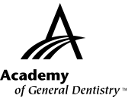|
Exercise No. 334
Subject Code: 016
Pharmacotherapeutics
The 15 questions for this exercise are based on the article, “Bisphosphonate-related osteonecrosis of the jaws: a potential alternative to drug holidays”, on pages 33-38. This exercise was developed by Thomas C. Johnson, DMD, MAGD, in association with the General Dentistry Self-Instruction committee.
|
Reading the article and successfully completing this exercise will enable you to understand the:
- risks and benefits of a drug holiday;
- pharmacokinetics of amino bisphosphonates (nBP); and
- problems caused by concentration of nBP into surgical sites.
|

